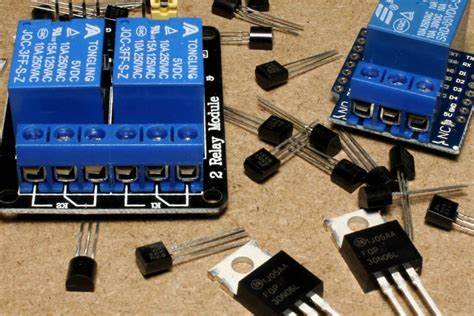Relays are switches that open or close electronically. Relay devices are used to make or break a circuit without the participation or involvement of humans. Relays are used to switch on or off a circuit electronically. In other words, relays are utilized to control circuits that are highly powered by just using low-powered signals. Relays are used as part of an electrical solution. Before using a relay, it is important to know the purpose of the electrical solution. Several factors require consideration before choosing a relay in a circuit. This content write-up discusses the different factors that are required to consider while choosing a relay. Selecting a good relay is to guarantee the best possible outcome and also prevents relay failure.
Factors worth considering while choosing a relay in a network
The following are the factors that are worth considering while choosing a relay within a network:-
Actual Max and Min Operating Temperatures
A relay’s performance is impacted by temperature in several ways. In any application using an electromechanical relay, it is critical to understand ambient (environmental) temperature. For instance, ambient temperatures have a direct impact on the relay’s coil’s capacity to function effectively, and coil performance is crucial to the relay switching process. The insulation on a coil may become destroyed at very high temperatures, which could lead to relay malfunction. Knowing the minimum and maximum temperatures is crucial since the materials used in a relay’s electrical contacts can be significantly impacted by temperature as well.
The continuous flow of current
This information is crucial for choosing the right relay for the application since it indicates how much electricity is utilized in the circuit in amperes. A crucial piece of knowledge is that current flow also acts as a heat generator, which can impact a relay’s operation and contact materials.
Switching of currents
This is the quantity of electricity measured in amps that the relay switches when it is in use. Transient voltages can happen depending on the type of electrical load being switched, perhaps impacting the relay’s switching performance under specific circumstances. When contact is closed, and it uses a high capacitive load, very much like lighting, then the initial currents can be 12 times higher than the running current may result. Switching on an inductive circuit like a winch motor may produce transient voltages that harm the contacts.
Load voltages
The Chint general relay system is impacted by the voltage type and level. Voltage and current are both directly related to power.
Control parameters
The choice of the right relay can be influenced by additional inquiries about the control system that houses the relay or relays. Are the control voltage and power adequate to effectively drive the relay? Is the voltage supply regulated? Is the control output a solid-state switch or a relay contact? When talking about the relay selection process, these questions give appropriate instances of specifics.
Load types
The type of electrical demand will be determined by precisely what the relay is switching, and this knowledge is crucial for the relay selection process. Electrical loads vary, yet they are crucial in selecting the right relay. Heating appliances and incandescent lamps are classic examples of resistive loads. Transformers, coils, and electric motors are examples of inductive loads. Capacitive loads, such as specific electric motors, power supply, radio, and telecom equipment, are found in energy-storing circuits.
Cycle rates
A Chint general relay may be required to open and close more quickly by some temperature controllers than it is intended to. Rapid cycling introduces heating effects that may impair relay effectiveness in hot environments.
Methods used for connections
The exact configuration of a relay within a circuit can provide its problems and affect the choice of a relay. The wire must be of the right size to give the maximum heat dissipation. Integrating the wiring terminals within the electrical circuit can result in heating because of resistance. Soldering and washdowns must be considered if the relay is PCB mounted. Most relays can also fit in a variety of sockets.
The above considerations are required to select a relay system within a network. By doing so, one can greatly enhance the performance of electrical systems. To know more in this regard, visit relevant content provided on the web.
